
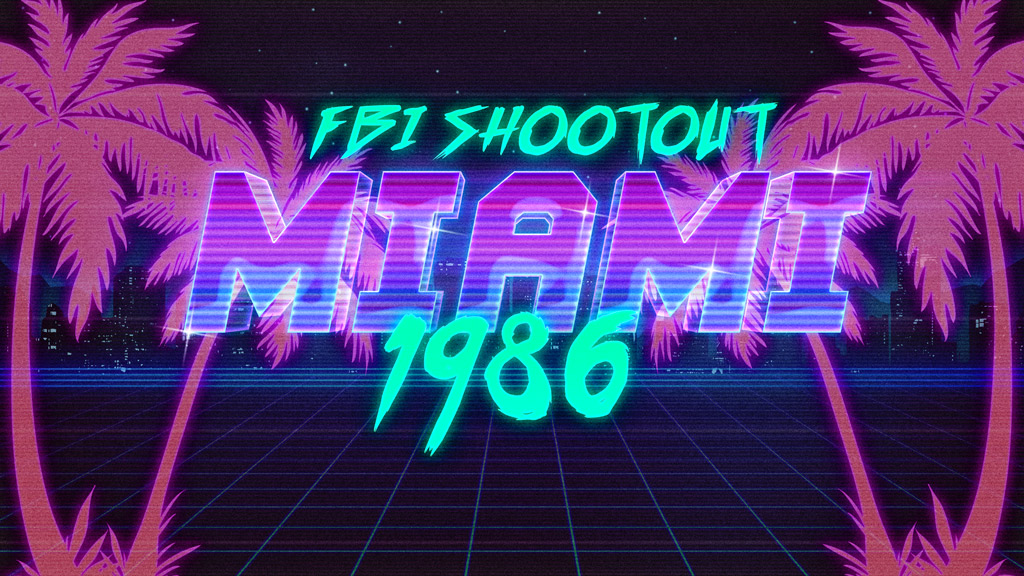
One fateful April morning in 1986, the echo of gunfire shattered the serenity of Miami’s suburban streets as a harrowing event unfolded that would etch in the annals of American law enforcement history. The FBI Miami shootout, as it is now known, was not only a fierce exchange of bullets between federal agents and two seasoned criminals. It was also a turning point that would transform FBI protocol and armament.
This historical article covers the circumstances that led to the violent confrontation, the details of the shootout, the lessons learned, and its enduring impact on law enforcement strategies today.
FBI Miami Shootout: The Perps
Michael Lee Platt, 32, and William Russell Matix, 34, met while serving in the U.S. Army at Fort Campbell, Kentucky. Before their notorious criminal activities, both Platt and Matix had clean records with no past offenses. Then, the criminal duo ended the life of Emilio Briel, a 25-year-old engaged in target practice, on October 5, 1985, at a quarry. They commandeered Briel’s vehicle to conduct a series of heists. Although law enforcement discovered Briel’s remains in March 1986, it took until May to correctly identify them.
Five days after murdering Briel, the pair made an unsuccessful attempt to rob a Wells Fargo armored vehicle outside a Winn-Dixie store. In the encounter, a security guard was shot in the leg and subsequently died from the wound. Platt and Matix escaped injury, even though they exchanged gunfire with other guards. The holdup failed, and they left without stealing any money.
The Spree
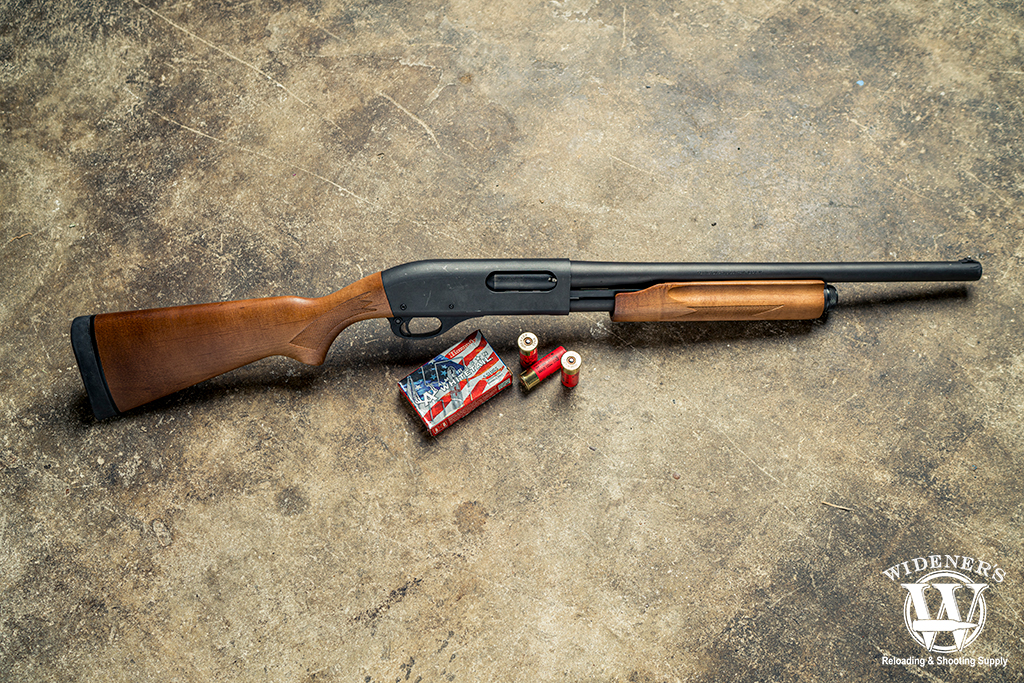
A Remington 870 shotgun, similar to the one used in the robbery of the Professional Savings Bank in Miami.
Their robbery spree continued on November 8, 1985. They targeted the Professional Savings Bank in Miami, getting away with $41,469. On January 10, 1986, they ambushed a Brinks truck at Miami’s Barnett Bank, blasting the courier with a shotgun and assaulting the already wounded guard with a rifle similar to an AR-15 or M16. They fled with $54,000 using Briel’s stolen car, later switching to a white Ford F-150.
In their next violent act, Platt and Matix shot Jose Collazo on March 12 while he was practicing at a quarry in the Florida Everglades, leaving him for dead and taking his black Chevrolet Monte Carlo. Collazo survived the assault and managed to find assistance after a three-mile trek. He described the thieves and passed the car’s license plate number to the police.
Finally, on March 19, 1986, they staged another robbery at the same Barnett Bank they’d hit before. This time, they got away with $8,338 using the vehicle they’d stolen from Collazo.
Carelessness Results In Their Demise
The killers had knocked off a string of banks over several months and attempted a few armored car heists, getting away every time. However, they eventually made two critical mistakes.
They didn’t kill the man from whom they had stolen their Monte Carlo getaway car, so he was able to identify them. Then, the pair didn’t bother to ditch the car’s original tags, virtually guaranteeing someone would spot them. That’s precisely what happened at 9:30 a.m. on April 11, 1986.
Benjamin Grogan and other FBI agents had been looking for Collazo’s 1982 black, two-door Monte Carlo, which had appeared in a recent bank heist. FBI Special Agent Jerry Dove, a West Virginia native who had joined the FBI four years earlier, rode with Grogan that day.
Ed Mireles, who had recently joined the FBI Miami Bureau, rode with Special Agent John “Jake” Hanlon. They were assigned to watch the Professional Savings Bank at 130th Street and South Dixie Highway. However, they had just set up the surveillance when they heard Grogan’s call: “Attention all units!”
A Short Chase Ends Up Trapping The Subjects
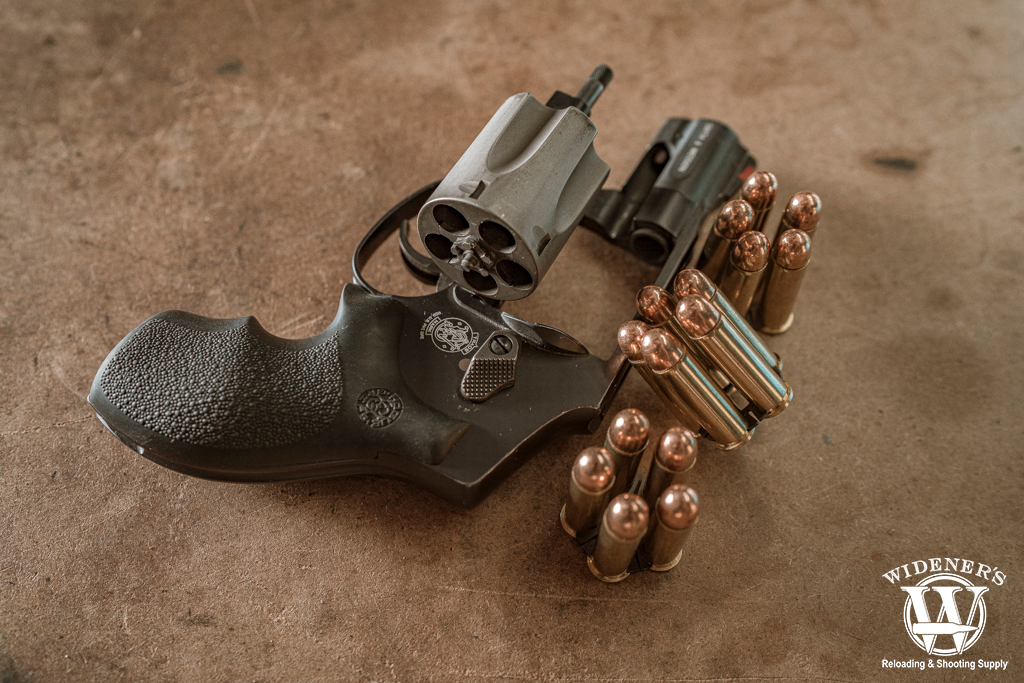
The FBI agents on the scene are reported to have been carrying various\ S&W .357 revolvers loaded with .38 Special +P ammunition.
Hanlon maneuvered the car into action. Mireless, prepared for a tactical situation, stood ready to gear up with his shotgun, don his body armor, and cloak himself in a raid jacket emblazoned with ‘FBI’ in stark yellow. However, urgency dictated there was no spare time for elaborate preparation.
With Hanlon at the wheel, their pace quickened. They gained on colleagues Grogan and Dove, who were in pursuit of the black Monte Carlo along 117th Street.
The chase escalated when FBI Special Agent Richard Manauzzi, driving solo, fell into formation with the growing convoy. Thinking quickly, Dove installed a blue bubble light atop the dash. Its glow and the accompanying siren elicited an unmistakable response. Mireles watched as the suspects twisted in their seats, realization dawning as they looked back at their pursuers.
The pursuit weaved through the city as the fugitives veered onto Southwest 82nd Avenue, hovering around the nexus of Southwest 122nd Street. Here, Manauzzi made a decisive move. He rammed the Monte Carlo twice on its driver’s side, causing a collision that abruptly halted the chase.
When the dust settled, the Monte Carlo was wedged between a parked car, an FBI cruiser, and a tree, immobilized and facing north in the yard of 12201 SW 82nd Avenue.
Grogan executed a tactical U-turn, positioning his vehicle behind the Monte Carlo. Hanlon, caught in the vortex, collided with a wall on the flank of 82nd Avenue.
As the scene’s suspense heightened, Task Force Supervisor McNeill arrived, driving alone. Special Agents Gilbert Orrantia and Ron Risner also converged on the location in separate vehicles strategically positioned across the way.
The Infamous FBI Miami Shootout
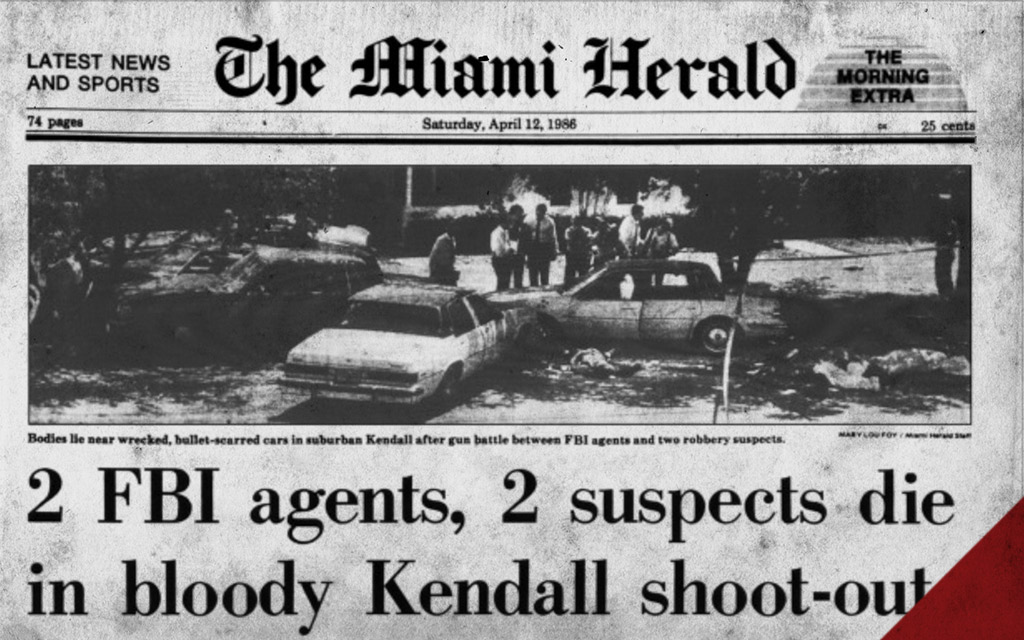
Although it only lasted five minutes, more than 100 shots were exchanged between FBI agents and the suspects. (Credit: Miami Herald)
“Police, FBI. Put Your Hands Up!” When McNeil gave that command, Platt and Matix started firing their weapons. As Ed Mireles raced across the street to join Grogan and Dove behind the Monte Carlo, gunfire erupted around them and McNeill. Platt, hemmed in by the car door on the driver’s side, had his gun raised and was firing away with his semi-automatic.
Suddenly, a more resounding blast shook the air like artillery. It was a 12-gauge shotgun informing the FBI agents they were under attack from some frightening firepower.
At 9:35 a.m., a dispatcher’s urgent voice broke through the radio static. Signaling shots fired on location, the dispatcher attempted to make contact with Grogan’s vehicle. Without a response, the transmission of another squad car cut in with an ominous proclamation: “Officers down!” The dispatcher repeated the grim news across the network: “Officers down! Officers down!”
Five Minutes In Hell
Platt, who was in the passenger seat, discharged his weapon across the front of Matix through the driver’s window. As Matix attempted to exit the vehicle, he sustained a gunshot wound from Grogan to his forearm. Following this, McNeill landed shots on Matix that struck his head and neck. Meanwhile, Platt extracted himself from the car, at which point Dove engaged, hitting Platt in the chest. Dove’s aim was true as he fired, hitting Platt in the thigh and foot. During this confrontation, another agent’s bullet found its mark on Platt’s back.
At this point in the firefight, Agent Manauzzi had been hit by the shotgun, and McNeill was shot in the hand and neck. One of the many bullets hit Orrantia, and both suspects were wounded. Despite his multiple wounds, Platt managed to work his way to the back of Grogan and Dove’s car, killing them at close range.
Platt then shot Hanlon as the agent ran to assist Grogan and Dove, and he hit Mireles, shattering his left arm. However, Mireles dragged his shotgun to the rear of McNeill’s car, where he could see Platt’s feet, and fired into them. Platt stumbled but kept moving, walking within a few feet of Mireles and firing four shots at him that all missed before retreating to join Matix in Grogan and Dove’s car.
Mireles somehow reached his feet, took out his Smith and Wesson 686, and approached the suspects while firing. Three of his shots struck Matix in the face, and his last hit Platt in the chest, ending the shootout.
The Aftermath: FBI Miami Gunfight
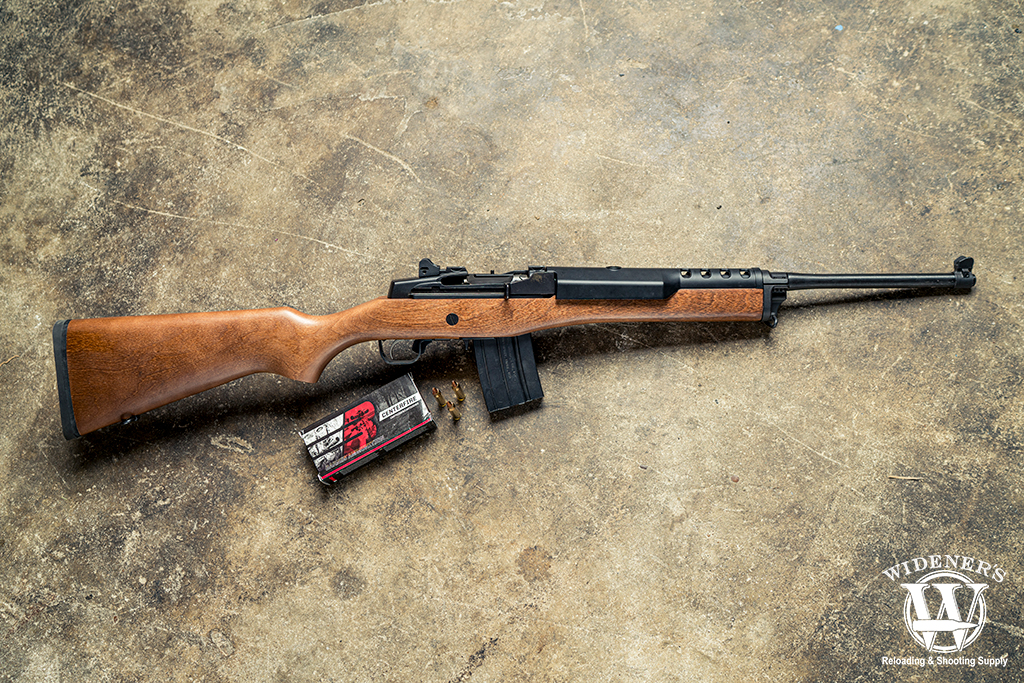
A Ruger Mini-14 rifle, similar to the one used by Michael Platt in the infamous FBI Miami shootout.
During the chaotic gunfight, over 140 bullets were discharged. Manauzzi sustained minor injuries from shotgun spray. All critical injuries resulted from Platt’s Ruger Mini-14 rifle, including the lethal shots to Grogan and Dove. Platt unleashed at least 40 rounds, while Matix used a shotgun once or twice. In addition, the pair fired three rounds from their .357 magnum revolvers.
Out of the ten individuals involved in the incident, nine sustained gunshot wounds. Matix was hit a total of six times; Platt suffered a staggering 12 bullet wounds. Agents McNeill, Hanlon, and Mireles faced severe injuries, with Manauzzi and Orrantia also wounded. Risner was the sole participant to emerge without an injury.
For his pivotal role in neutralizing the threat, Mireles received the distinguished FBI Medal of Valor—the first in the Bureau’s history. Upon retirement in 2004, he penned FBI Miami Firefight: Five Minutes that Changed the Bureau with his wife, Liz. The title signifies the event’s impact on the FBI, which led to critical revisions in training, operational tactics, and equipment.
Changes In The Bureau
Following the tragic FBI Miami shootout of 1986, the Bureau implemented significant changes. After scrutinizing the event, the FBI acknowledged the need for better firearms and improved agent body armor. This change led to the development of more effective handgun ammunition, capable of reliably stopping adversaries. Additionally, there was a shift towards more comprehensive firearms training, focusing on real-world scenarios to better prepare agents for the complexities of violent confrontations.


